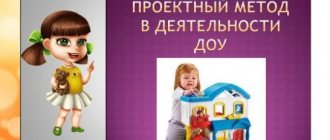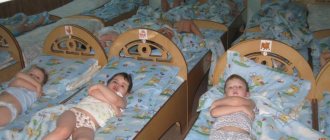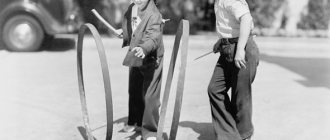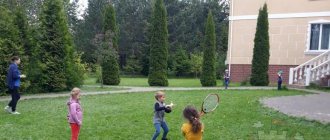Difference from standard approaches to teaching
Classical pedagogy assumes that the child simply copies or imitates the actions of the teacher.
According to developmental pedagogy, the child has greater freedom to think independently, but still the key decision is in the hands of the teacher. We illustrate these approaches with an example.
Let's assume that all children in kindergarten have the same cups. How can you remember yours? Classic approach: the teacher gives everyone an individual sticker, puts it on their cup and asks the children to repeat this action. TRIZ in kindergarten will look like this: encourage the child to invent and find differences on his cup. Does it take more time? Maybe. However, a child’s imagination can amaze with its originality and inexplicability, and this will be his personal, meaningful decision.
Skillful use of TRIZ in kindergarten
-
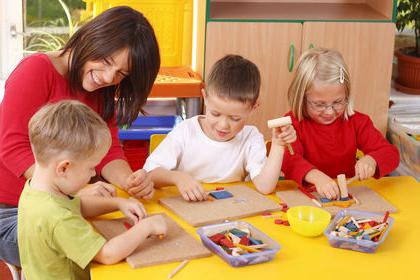
Resist the urge to lecture and explain a given situation for a long time. If the child does not understand what you want from him, then you should postpone this conversation to another time or not return to it at all.
- Do not put pressure on your child with words such as “come quickly”, “think for yourself”, “this is wrong”. TRIZ technology in kindergarten implies that any opinion and version is worthy of consideration. In addition, the child learns to think gradually, and the teacher’s task is to help, not force.
- Don't forget about praise. Of course, it must be sincere and specific. Let your child feel confident in communication and express his wildest ideas.
- Rely on the knowledge and concepts that the child knows well. To build a chain of hypotheses, you need to have a complete understanding of the given task and situation.
Having already a basic understanding of what the TRIZ methodology is in kindergarten, and remembering these tips, you can safely look at some games. Not only will children love them, but they will also bring the whole theory into reality.
An example of using the technique in kindergarten
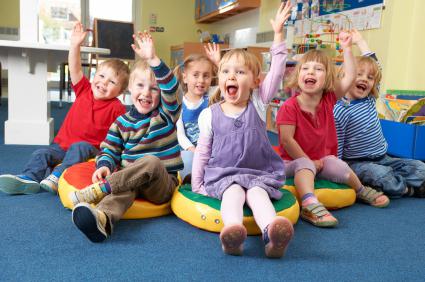
TRIZ techniques in kindergarten do not require specially allocated time - it is a matter of thinking and approach to children. For example, when reading a fairy tale with children, you can analyze the behavior of the main character.
If we look at the classic nursery rhyme about the bull whose board is running out, I'm about to fall, we can encourage children to think about the following questions: How can we help the bull not to fall? Let him stop. But he needs to move on, what to do? Place another board and so on. The main thing is not to make decisions for the child, but to teach him to think and analyze the situation from different angles and from the point of view of efficiency. TRIZ technologies in kindergarten can bring pleasure to the teacher himself.
So, if you are already inspired and eager to reflect in this way with your mentees, then carefully read the following tips.
Practical application in kindergarten
In order to successfully apply TRIZ in kindergarten, it is important for the teacher to have a good understanding of such concepts as the principle of contradictions, the use of all resources, the ideal final result, and so on. However, preschool children should not describe the technical arsenal of TRIZ - it would be better to have more practice. For example, a child’s toy is broken. Using the principle of contradictions, you can clarify whether something is good or bad. Most likely the answer will be “bad.” Then the use of all intellectual resources comes into force: how can it be used now? How about a stand? Or is it a super car that can run on three wheels?
The choice is everyone's
Of course, each parent or teacher will decide for himself how to deal with his children. However, it is always useful to think: how do I want to see my child or the wards entrusted to me? If all aspirations and efforts are directed only at satisfying physical needs and providing a minimum amount of knowledge, then will a thinking and versatile personality grow? In our age of bustle and intense pace, it is sometimes difficult to learn something new, but the result is worth it! In any case, climbing a mountain begins with the first step. And who knows what hidden opportunities and enormous potential can be discovered in oneself using TRIZ? The main thing is not to be afraid to break teaching stereotypes and look for new approaches. Of course, no one can become a perfect teacher, but you can constantly strive for this goal!
The influence of the technique on the type of worldview of the child
At preschool age, the child does not yet have a formed worldview. Therefore, at this stage, the role of TRIZ in kindergarten is to develop analytical and comparative thinking, the ability to find possible solutions and choose the optimal ones.
However, in the future, such mental training will form not just a thinking person, but one who is always able to develop. This is not a narrow-minded, complex person who gives up and gets lost in the face of difficulties. No, this is the kind of thinking that is aware of past incorrect conclusions and hypotheses, but continues to confidently move forward. It is these qualities that are so valued in modern society. If a purposeful person sees a blind corner in front of him, then, after analyzing, he will understand that it may be made of plasticine or paper, and will overcome it, spending additional strength.
At what age to start
There are no strict rules or specific restrictions in this matter. However, it is important to remember that from the first years of his life a child begins to encounter situations that require him to find a rational solution. Probably many of us were eyewitnesses or participants in such a conversation:
- Mom, light!
- Olya, chair!
Here comes TRIZ. Although, of course, in this case my mother was not aware of what approach she was now using. She simply helped the child solve the problem, encouraging him to think and use all the resources available to him.
It is all the more important to use TRIZ technologies in kindergarten, when a trained teacher teaches children. Of course, everyone will have their own successes: some kids are better at sculpting than drawing, while others are better at it. However, both have a positive impact on its development. Likewise, TRIZ technologies will in any case have a beneficial effect on the mental and mental development of the child. So is it worth delaying this?
Who lives in the little house?
Goal: to teach the child the elements of analysis, to encourage him to notice common signs by comparing them.
You will need: colorful images of various objects, for example: a pear, a pen, a house, a backpack, a pan, a flower, and so on. You can make these blanks yourself or make them with your children. A large box or closet is ideal for a mansion - the children’s imagination will tell them everything else.
Introduction: recall the fairy tale “Teremok” with the children and offer to act it out as they do in the land of Changelings.
Progress of the game: each child, with his eyes closed, draws out his drawing and plays for the drawn object. The presenter chooses the owner of the tower - the Changeling King, who has called his friends to a feast. The characters take turns approaching the tower. The first person invited asks:
- Knock, knock, who lives in the little house?

- I am ... (calls himself, for example, a flower). And who are you?
- And I am ... (calls himself, for example, a pear). Will you let me into the little house?
“I’ll let you in if you tell me how you’re like me.”
The guest carefully compares the two drawings and names the common points found. For example, he may say that both the flower and the pear have a branch. After this, the first participant enters the mansion, and the next guest is already knocking on the owner’s door. It is important to maintain a friendly atmosphere: if someone cannot answer, then the rest of the children help.
The role of play in child development
These are just two illustrative examples that illustrate how effective TRIZ methods are in kindergarten. Games, of course, can be very diverse; for the teacher there is complete freedom of imagination. But if at first something doesn’t work out very well, this is not a reason to give up. Play is of enormous importance for the development of a child aged 3 to 7 years, because it is in it that the child imitates the social roles around him, so you should try to learn how to combine TRIZ technologies with the game. This is especially important in kindergarten; believe me, the result is worth it.
"Masha the Confused"
Goal: to train attention, the ability to see all the necessary resources.
Before the game, it is important to include TRIZ elements. In kindergarten this is not difficult to do, since a huge number of different objects are offered to the child’s attention. You can ask, pointing to an object: “What is this cup for? What is the door for? What is this pillow for?
Introduction: tell children about absent-minded and forgetful people who confuse and forget everything (don’t forget to make an educational conclusion). And then ask: who wants to help the confused mashas? The game can then be played in two ways as desired.
- The host will be Masha. Looking around in confusion, he says:
- Oh!
- What's happened?
- I lost (names an object, for example, a spoon). What am I going to eat soup with now (or call any other action)?
Sympathetic helpers begin to offer their own ways to solve the problem: you can take a cup and drink the soup, and then eat the rest with a fork, etc.
2. The development of the game occurs in the same way as in the first, but the role of Masha the Confused is played by different children, and not just the leader. For example, whoever suggested the best alternative to a lost item becomes Masha. This ensures the activity of all participants in the game.
